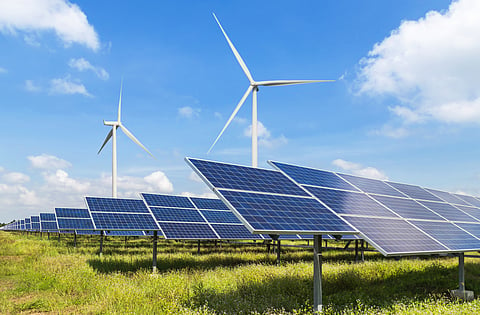

India has hit a milestone in its energy transition journey, with over 50 per cent of its installed electricity generation capacity now coming from non-fossil fuel sources, Union New & Renewable Energy Minister Pralhad Joshi said on July 14, 2025.
India’s total installed electricity capacity stands at 484.82 gigawatts (GW), of which 242.78 GW comes from non-fossil fuel sources, as of June 30, 2025, according to a central government statement. Renewable energy accounts for 38.08 per cent (184.62 GW), large hydropower contributes 49.38 GW (10.19 per cent), while nuclear energy makes up 8.78 GW (1.81 per cent).
The achievement is five years ahead of the country’s 2030 target set under its nationally determined contributions to the Paris Agreement, marking an acceleration in clean energy transition. Joshi described the development as a “proud moment” and stated that India is “showing the way” to the world on climate solutions.
The statement attributed the success to a combination of policy measures and large-scale deployment of renewable technologies. Initiatives such as the Pradhan Mantri Kisan Urja Suraksha evam Utthaan Mahabhiyan (PM-KUSUM), the recently launched PM Surya Ghar: Muft Bijli Yojana and the development of solar parks and hybrid renewable energy policies have contributed to the growth of clean energy.
The government is aiming for 500 GW of non-fossil fuel capacity by 2030 and net-zero emissions by 2070.
India has seen a 4,000 per cent increase in installed solar capacity over the past decade, said Union Minister of Commerce and Industry Piyush Goyal had stated last week.
An earlier central government statement stated India’s total installed power capacity reached 476 GW as of June 2025. Of this, non-fossil fuel sources contributed about 235.7 GW (49 per cent), including 226.9 GW of renewable energy and 8.8 GW of nuclear energy.
According to the latest statement, solar-powered pumps have been distributed to a large number of farmers under the PM-KUSUM scheme, with the aim of promoting energy-secure agriculture and feeder-level solarisation. The PM Surya Ghar scheme, launched in 2024, targets the installation of rooftop solar systems in 10 million households, with a focus on decentralised energy access and encouraging citizen participation in electricity generation, according to the Union Ministry of New and Renewable Energy (MNRE).
Large-scale solar parks have contributed to the cost-effective deployment of renewable energy, while wind power continues to play a significant role in meeting peak electricity demand, particularly in Gujarat and Tamil Nadu, according to the statement. The bioenergy sector has also expanded, with reported contributions to rural employment and circular economy objectives.
Looking ahead, MNRE identified the need to raise per capita consumption of clean electricity, particularly in underserved regions, by expanding distributed renewable energy systems and promoting energy-efficient appliances. It also highlighted the importance of strengthening the electricity grid to manage increased renewable penetration, including investments in Battery Energy Storage Systems and pumped hydro storage.
The ministry noted that circularity in the use of materials, such as those in solar panels, wind turbines and batteries, would be important to ensure long-term sustainability. Green hydrogen was also identified as a potential industrial fuel to support future decarbonisation.
The role of Artificial Intelligence is expected to grow in managing grid operations, demand forecasting and improving system efficiency. However, the ministry cautioned that increased digitalisation brings cybersecurity risks and protecting critical infrastructure will remain a priority.